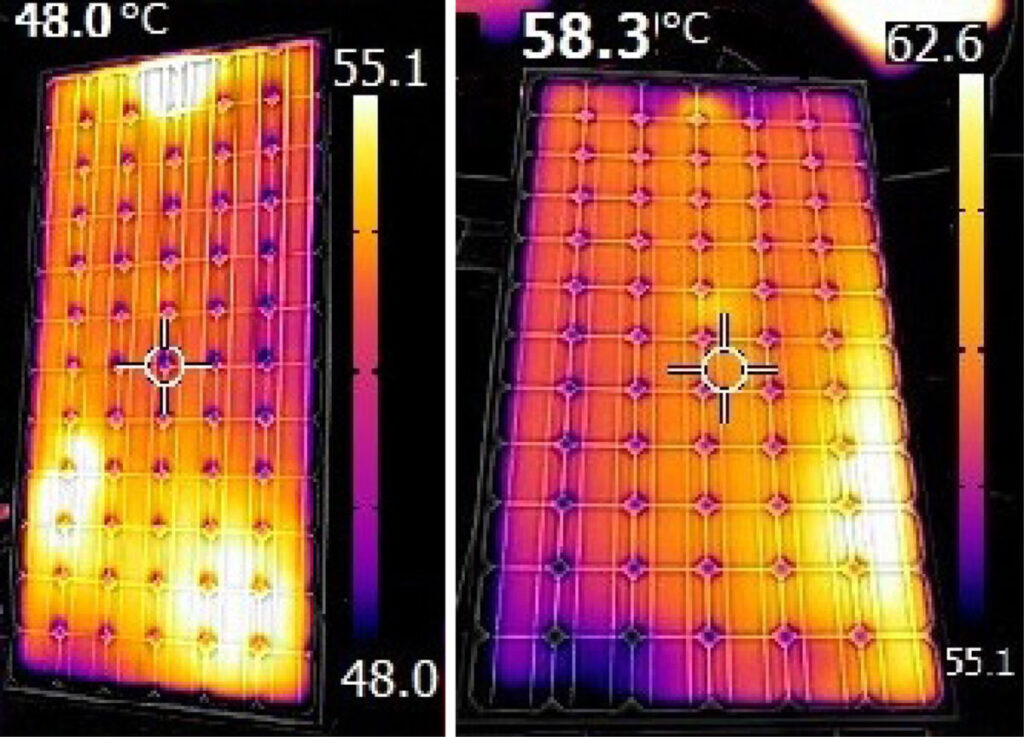Researchers in Spain have developed a new method for estimated potential-induced breakdown (PID) in solar modules used in PV-driven water pump systems. The proposed approach can detect PID of the open-circuit voltage measurement of the PV moduler series of the system.
Scientists from the Spanish University of Granada have presented and compared four regression methods to estimate potential induced demolition (PID) in PV strings. Their methods use the open-circuit voltage (VOC) of the strings for the predictions.
“The proposed method solves a problem with health stress safety, prevents failures of the water supply and estimates the size of repaired purchases,” said the academics. “Days with very high temperatures are the best times to detect PID in the field, but they represent a safety problem for maintenance staff in very hot areas. The method is fast and it is not necessary to reach the roof.”
The developed model was based on data collected from two 75 kW PV energy plants, installed on the roof of pumping facilities for the water that they feed from electricity. The P-Type Monocrystalline silicon plants were installed in 2009 in the Spanish province of Córdoba, one of the most popular areas in the summer of the country. The manufacturer’s specifications guaranteed a maximum power loss of 10% after 10 years and 20% after 25 years. However, measurements show that after years their production fell by 67.58% and 47.22% respectively respectively.
Image: University of Granada, Solar Energy, CC by 4.0
“In 2019, a repower project was launched that included an assessment of the demolition of the three plants, and the replacement of the most demolished panels: 246 modules from 656 (37.57%) in factory 1 and 186/608 (30.59%) in factory 2,” the Academics said. “The recovered partially recovered production in 2020 to 73.04% of the average of the first four years in factory 1 and 72.88% in factory 2 by 2021.”

Image: University of Granada, Solar Energy, CC by 4.0
With the help of this opportunity, the team took some field measurements with which they could develop their models. Data from those plants resulted in pairs-the open-circuit voltage of strings and the number of broken panels. Those couples were good for 41 strings in plant 1 and 33 in plant 2. Moreover, some panels were taken to a laboratory test to attach PIDs.
They initially used linear regression to model this relationship, so that the number of broken panels of a string could be estimated based on the open circuit voltage. They then added a quadratic regression. “The methods are initially equipped with data from Plant 1, which means that regressions P1L (linear), P1Q (quadratic) and without bijters P1LO, P1QO, equivalent, fitting with data from both plants, the models are, the models are P12L, P12Q, P12LO and P12QO,” they said.
This analysis showed that the determination coefficient (R2) between the VOC and the number of estimated broken strings was best in P12QO, with 0.8204. P12lo had an R2 of 0.8189, P12Q of 0.7020 and P12L had an R2 of 0.6974. With the help of the best model, the team calculated how many new panels they needed to order to restore plant 3, which was of a different size and had problems than the other plants. According to their calculation, a purchasing order of 96 panels is placed.
“The most important contribution is that it is born of a real practical need; a rapid estimate of the panels that are in a failure state, without having to go to the roof of the plant, so that long measurements of voltage module are avoided by module in times of the danger for thermal shock to maintenance conditions. plants. “
Their findings were presented in “A simple method to estimate the broken photovoltaic modules of the string open circuit voltage in solar pump systems“Published in Solar energy.
This content is protected by copyright and may not be reused. If you want to work with us and reuse part of our content, please contact: editors@pv-magazine.com.
Popular content


